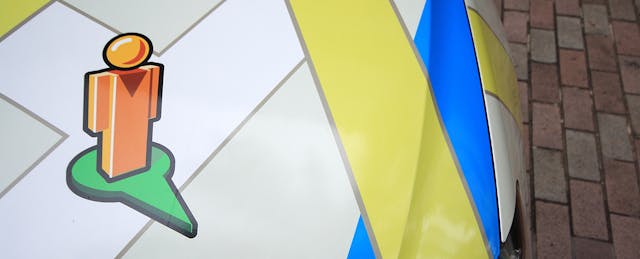“He who controls the metaphor controls the debate.” – David Gergen
Among the many lessons I learned from my time working for David Gergen, an advisor to four U.S presidents and now the director of the Center for Public Leadership at Harvard’s Kennedy School of Government, was that metaphors matter in public life. The prevailing metaphor in a field shapes the contours of a conversation.
For years, education techno-enthusiasts have awaited breathlessly the arrival of an “Amazon” or “Netflix of Education.” What they mean essentially is a platform that can use big data to deliver the right learning experience at the right time for each learner. The metaphor stems from the way Netflix “learns” about your viewing preferences based on what you watch, and is then able to recommend shows and movies you’re likely to enjoy (and may not otherwise discover) based on others with similar viewing patterns. Similarly, Amazon recommends products for you based on what you search for and buy and based on others who have shown similar preferences.
Adaptive learning companies haven’t shied away from the analogy either, as descriptions of themselves as “a sort of Netflix for learning” are not unusual.
The metaphor feels increasingly flawed, however.
Deciding the “right” next step in education is a far more complex endeavor than recommending a movie or product. To do it successfully, you need to know a whole host of things: a student’s prior learning and long-term memory, her working memory capacity and her learning goals. Then there are factors outside of school that shape how attentive and ready to learn a student is, based on how much she has slept, what she ate, her exercise, and her social and emotional mindset on that particular day.
It may be more feasible for platforms that focus on a single subject—like math—to make accurate recommendations. But the more widespread a product’s focus is, the harder it is to do. Additionally, Digital Promise’s Learner Positioning Systems, which helps curriculum builders design content with learner variability in mind and assist teachers in better serving each individual student, may be far better suited to this sort of work.
What’s more, Netflix and Amazon are often wrong about their recommendations. Part of this is inherent in the limitations of big data. By definition, data is backward looking. Although it can help tell a story about someone and situate them within an existing solid theory of what they are likely to need or want next, it’s not good at deducing causality or understanding changing circumstances in the present. We tolerate or even enjoy that when it comes to Netflix or Amazon because the decisions we make based on their recommendations are often relatively low stakes.
None of this inherently dooms the Netflix/Amazon metaphor, but there might be a better one, at least according to Gooru. Gooru is a nonprofit that has built the Learning Navigator, a free, online tool that offers personalized pathways to help students reach their learning goals. Its founder, Prasad Ram, makes the argument that what education needs is really a Google Maps for education.
What he means by that is services that starts by “locating the learner,” or understanding the position of a learner relative to her learning goal before suggesting the best pathway to help that learner achieve that goal. Such tools must also accommodate a variety of other pathways depending on the actions and needs of the learner—just as Google Maps can accommodate a variety of routes to a destination once it knows where you are and dynamically change the route based on what you actually do.
Google Maps of course has an advantage in that you can locate someone based on two data points—latitude and longitude. Understanding where someone is as a learner is much more complicated, which is why Gooru developed what it calls “skyline”—a series of data points about what knowledge, skills, and dispositions the learner has mastered relevant to a particular subject.
The Google Maps analogy is not without its critics. Larry Berger, a long-time education technology entrepreneur and current CEO of Amplify, wrote recently that “We also don’t have the assessments to place kids with any precision on the map. The existing measures are not high enough resolution to detect the thing that a kid should learn tomorrow. Our current precision would be like Google Maps trying to steer you home tonight using a GPS system that knows only that your location correlates highly with either Maryland or Virginia.”
That may be true, but Ram’s argument is that it’s OK that not all the parts of the map are filled out because teachers and, to a lesser extent, standards can help students identify the goals of what they need to master and fill in the pathways themselves. By taking advantage of digital data from a fuller spectrum of learning, including projects, presentations, essays, and proofs, it is possible to locate the learner in real-time and then map where they are against where they are going..
With the learner located, digital educational platforms can then use big data to figure out the best way to assist her in achieving her goals based on the many other pathways it has seen others take to that destination. And it can crunch the data to evaluate the efficacy and potential of numerous learning activities, both online and offline, along that pathway. In other words, it doesn’t need to use big data to evaluate the learners—but rather the different paths they take.
Putting big data in its rightful place—and not seeing it as a miracle ready to solve all of education’s woes—would be a step forward in education technology conversations. And using Gooru’s metaphor of Google Maps instead of Netflix or Amazon feels like a more helpful, and less intimidating, way to provide signposts for a conversation around how technology can aid educators and students in their work.


